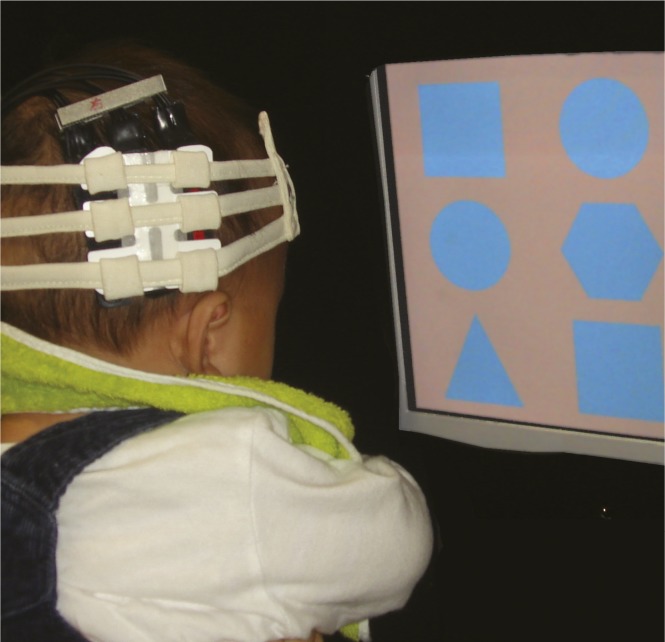Measuring real-world value of natural capital
Water volume declines in the Kansas section of the High Plains Aquifer between 1996 and 2005.
The term “natural capital” refers to all the natural resources that humans can use to support life on Earth. Economists have long attempted to assess the value of Earth’s natural capital within the context of established financial accounting practices and economic capital theory. Eli Fenichel et al. (pp. 2382–2387) describe a framework for quantifying natural capital with prices that can be compared directly with traditional assets such as real estate, factory machinery, and inventory. Conforming with neoclassical economic capital theory, the framework incorporates the dynamics of changing ecosystems and human behavior to account for income derived from nature. As an example, the authors applied their approach to groundwater in the Kansas High Plains Aquifer, a declining source of agricultural water for western Kansas. The case study revealed that groundwater extraction reduced the state’s wealth by approximately $110 million per year, in 2005 US dollars, roughly equivalent to the state’s budget surplus for that year. According to the authors, implementation of effective groundwater management policies and prudent investment strategies could potentially offset such economic losses. — T.J.
Categorical color perception and language acquisition
Brain activity in infants distinguishes color categories.
Humans can distinguish thousands of colors, but individuals across cultures use relatively few words to describe a continuous color space. Past studies have suggested not only that language could influence the perceptual grouping of colors into a few discrete categories, but also that categorical color perception may develop independently of language. Jiale Yang et al. (pp. 2370–2375) examined neuronal responses associated with color perception in 12 5- to 7-month-old prelinguistic infants and six adults. In each 10-second trial, the participants saw a three-by-three array of nine geometric shapes that alternated in color every second. In the between-category condition, the color of the shapes alternated between blue and green, whereas the within-category condition contained shapes that alternated between different shades of green. Brain imaging through near-infrared spectroscopy revealed that visual regions in the brain’s occipitotemporal cortex in both infants and adults responded to the between-category condition, but not to the within-category condition. The findings suggest that the visual system can support the perception of color categories prior to language acquisition. According to the authors, categorical color distinctions might arise before the development of linguistic abilities, but are later shaped by language learning. — J.W.
Brain size and problem solving among carnivores
Spotted hyena standing by puzzle box.
Correlations between brain size and advanced cognitive skills, such as innovation and self-control, among animal species have recently emerged. However, the difficulty of comparing animals with unique behavioral adaptations to their environments, among other factors, has hampered an understanding of whether species with larger brains than others have superior cognitive abilities. Sarah Benson-Amram et al. (pp. 2532–2537) compared the ability of 140 zoo-reared carnivorous mammals from 39 species and 9 families to retrieve a food reward by opening a steel mesh puzzle box, the size of which was scaled to each species’ body size. Species with large brains relative to body mass, such as those from the bear and raccoon families, were more successful at the problem-solving task than species with small brains relative to body mass, such as those from the mongoose family; performance improved with experience and was unrelated to manual dexterity. Social species, with large average group sizes, such as banded mongooses, had no advantage over solitary species, such as black bears or wolverines, in opening the puzzle box. Incorporating volume information from virtual endocasts of four major brain regions of some species improved the ability of a model to predict the species’ performance in the puzzle-box trials, compared with a model that included total brain volume. Relative brain size might thus help predict animals’ problem-solving abilities, according to the authors. — P.N.
Observing cellular metabolite production in real time
Cells can be engineered to produce useful chemicals, but the potential of such metabolic engineering has been limited by the arduous methods needed to measure the concentration of cellular metabolites. Jameson Rogers and George Church (pp. 2388–2393) have developed a strategy for fluorescence-based, real-time monitoring of the production of cellular products. The authors used genetically encoded biosensors based on inducible small-molecule systems to link the expression of fluorescent proteins to the intracellular amount of a product. The authors combined these biosensors with cells engineered to produce a particular metabolic product and used fluorescence intensity to track product formation in real time. The authors also used the system to produce various plastic precursors and confirmed that higher fluorescence indicated higher product concentrations. In addition, the authors developed two biosensors for 3-hydroxypropionate (3HP), a renewable plastic precursor, and used real-time observation to improve 3HP production by 23-fold compared with previous reports. Finally, the authors developed a method for in vivo production of acrylate, an important plastic precursor, from glucose, and monitored the production of two other commercially important chemicals, glucarate and muconate, showing that the technique had wide-ranging applications. According to the authors, the technique could be used for high-throughput evaluation of metabolic engineering methods. — S.R.
Restful REM sleep, depression, and anxiety
Insomnia is a common sleep disorder associated with depression, anxiety, and posttraumatic stress disorder. The development of effective treatments for these disorders has been limited by incomplete understanding of the causes of physiological hyperarousal, which is a key characteristic of insomnia. Rick Wassing et al. (pp. 2538–2543) recorded two nights of brain activity, eye movements, and other physiological measures in 32 people, who also completed a questionnaire about nocturnal thoughts. The findings validated that restless rapid-eye-movement (REM) sleep, which is commonly associated with insomnia, could be approximated by the abundance of nocturnal thoughts—a variable measurable in a sufficiently large sample of people. The authors then evaluated the frequency of nocturnal thoughts in 1,199 participants who also completed questionnaires measuring the severity of hyperarousal and insomnia as well as the duration of distress after personal distressing experiences. The more people showed signs of restless REM sleep, the less a night of sleep helped to dissolve the distress from such experiences. The resulting distress accumulation, in turn, contributed to the development of chronic hyperarousal. According to the authors, targeted interventions promoting restful REM sleep may benefit patients suffering from significant emotional distress and sleep disturbances. — J.W.
Screening platform for drug discovery
Complex human diseases such as cancer can arise from defects in multiple molecular pathways. Despite the need for new combination therapies that simultaneously target multiple disrupted gene networks, previous techniques for discovering disease-related gene combinations have been expensive, labor-intensive, and challenging to scale. Alan Wong et al. (pp. 2544–2549) developed a simple, efficient screening platform to identify gene pairs that act synergistically to regulate disease-related cellular processes. The authors used a recently developed approach called combinatorial genetics en masse (CombiGEM) to rapidly create a library of 23,409 pairwise combinations of guide-RNAs (gRNAs). The gRNA molecules form a complex with the Cas9 enzyme to generate mutations at specific genomic sites. Leveraging this genome-editing approach, known as the CRISPR-Cas9 system, the authors delivered gRNA pairs into human ovarian cancer cells, thereby simultaneously generating mutations in gene pairs. The CombiGEM-CRISPR screening platform revealed several gene pairs that acted synergistically to regulate cancer cell growth. For example, gRNA pairs that simultaneously targeted the KDM4C and BRD4 genes reduced cancer cell growth to a greater extent than individual gRNAs that targeted only one of these genes. According to the authors, the CombiGEM-CRISPR platform could facilitate the discovery of synergistic drug combinations for complex human diseases. — J.W.





